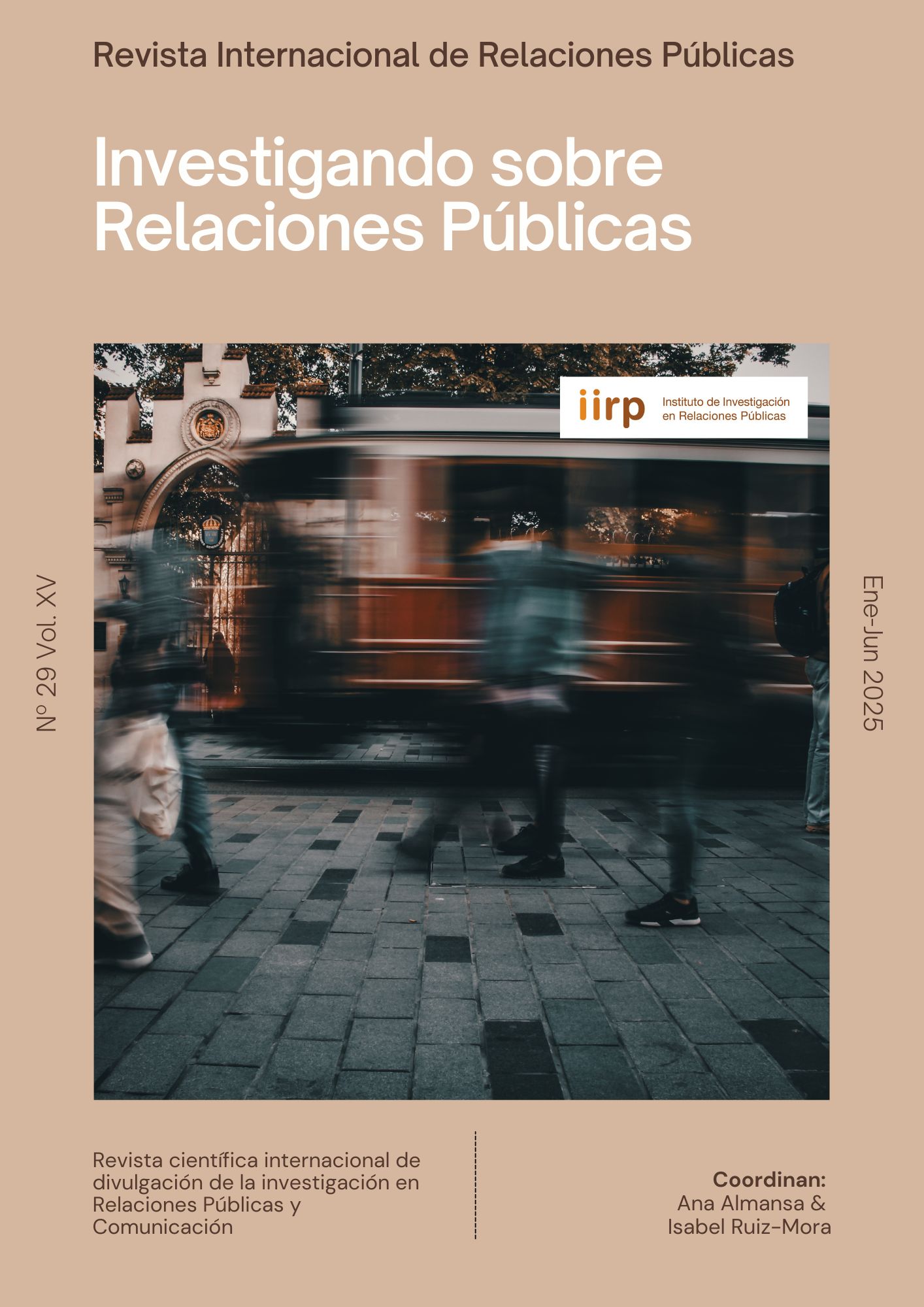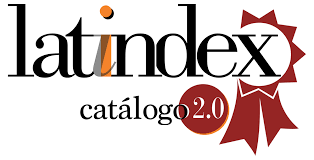Building Trust from the Inside Out: The Interplay of Employer Branding and Corporate Reputation
DOI:
https://doi.org/10.5783/revrrpp.v15i29.881Keywords:
Strategic Communication, Public Relations, Corporate Image, Human Resources, Labor RelationsAbstract
Corporate reputation is a collective, multistakeholder evaluation of an organization's ability to meet the value expectations of its publics. This concept, rooted in perceptions and experiences, is intrinsically linked to corporate culture and behavior, both of which are intangible assets that originate within the organization and extend outward. The importance of employer branding strategies lies in their role as the foundational elements upon which external reputation is built. This study examines the methodologies, dimensions, indicators, variables, and participant profiles used by the main monitors and rankings of employer branding reputation. A qualitative approach is employed, utilizing content analysis through elemental coding with a documentary design and descriptive-explanatory scope. The research focuses on analyzing the methodologies, dimensions, indicators, variables, and participant profiles used by the primary employer branding reputation monitors and rankings. The study adopts a qualitative approach, employing content analysis through elemental coding. The sample includes four prominent employer branding monitors: Merco Talento, Great Place to Work, and Inc.’s Best Workplaces. The selection of these monitors was based on their recognition and influence in the field of employer branding. Data collection involved a rapid survey of communication directors, senior consultants, and academics to identify the most relevant monitors. The analysis aimed to uncover the dimensions, indicators, and variables evaluated by these monitors and to compare their methodologies and transparency levels. The analysis and subsequent coding revealed a total of eight dimensions, organizing 16 indicators and 95 variables evaluated by these monitors and rankings. The dimensions identified include quality of work life, employer brand perception, internal reputation, commitment and trust, communication and clarity, organizational climate, workforce composition, and rotation and stability. Each dimension encompasses various indicators and variables that reflect different aspects of employer branding and corporate reputation. For instance, the quality of work life dimension includes indicators such as salary and benefits, professional development, and employee well-being. The employer brand perception dimension covers aspects like external perception, environmental impact, and talent attraction. Despite some level of agreement among the monitors regarding the dimensions and indicators, significant divergence exists in their methodologies and the participants involved in the evaluation process. Merco Talento, for example, employs a multistakeholder approach, gathering data from various internal and external stakeholders, including employees, HR directors, and external experts. In contrast, Great Place to Work and Inc.’s Best Workplaces primarily rely on employee surveys, focusing on internal perceptions. This methodological divergence highlights the varying degrees of comprehensiveness and stakeholder inclusion among the monitors. The findings underscore the complexity and multifaceted nature of employer branding and corporate reputation. The identified dimensions and indicators provide a comprehensive framework for understanding how organizations are evaluated in terms of their employer branding efforts. However, the methodological differences among the monitors raise questions about the comparability and reliability of their rankings. The lack of transparency in some monitors' methodologies further complicates this issue, as it limits the ability to critically assess and compare their evaluations. The study also highlights the importance of transparency and methodological rigor in the evaluation of employer branding. Monitors like Merco Talento, which provide detailed methodological information and involve multiple stakeholders, offer a more holistic and credible assessment of employer branding. In contrast, monitors that rely solely on employee surveys may provide a narrower perspective, potentially overlooking important external stakeholder views. In summary, this study provides valuable insights into the evaluation of employer branding and corporate reputation, highlighting the need for comprehensive, transparent, and multistakeholder approaches. By addressing these issues, organizations can better understand and improve their employer branding efforts, ultimately enhancing their overall corporate reputation.Downloads
References
Ahamad F., Saini G. K., & Jawahar I. M. (2022). Interactive influence of work–life balance benefits, employee recommendation, and job attributes on employer attractiveness and job pursuit intentions: Two experiments. Asian Business Management, 16(3). https://doi.org/10.1057/s41291-022-00184-4
Arroba, J. (2000). ¿Cuándo y cómo se hace un sondeo flash? Revista Latinoamericana de Comunicación Chasqui, (70), s/p.
Barnett, M., Jermier, J., & Lafferty, B. (2006). Corporate Reputation: The Definitional Landscape. Corporate Reputation Review, 9, 26-38. https://doi.org/10.1057/PALGRAVE.CRR.1550012
Charvát-Janechová, J., & Bednárik, J. (2023). The impact of corporate identity on reputation and employer's brand. Serbian Journal of Management, 18(1), 59-69. https://doi.org/10.5937/sjm18-37903
Chun, R. (2005). Corporate Reputation: Meaning and Measurement. International Journal of Management Reviews, 7(2), 91-109. https://doi.org/10.1111/J.1468-2370.2005.00109.X
Dabirian, A. (2021). Employer Branding: Psychological Contract Between Employer and Employees in the IT Industry. IT Professional, 23(5), 12-16. https://doi.org/10.1109/MITP.2021.3105251
Denny, E., & Weckesser, A. (2022). How to do qualitative research? BJOG, 129(7), 1166 - 1167. https://doi.org/10.1111/1471-0528.17150
Dortok, A. (2006). A Managerial Look at the Interaction Between Internal Communication and Corporate Reputation. Corporate Reputation Review, 8, 322-338. https://doi.org/10.1057/PALGRAVE.CRR.1540258
Dowling, G., & Moran, P. (2012). Corporate Reputations: Built in or Bolted on? California Management Review, 54(2), 25 - 42. https://doi.org/10.1525/cmr.2012.54.2.25
Frare, A., & Beuren, I. (2021). Effects of corporate reputation and social identity on innovative job performance. European Journal of Innovation Management, 25(5), 1409-1427. https://doi.org/10.1108/EJIM-02-2021-0071
Foreman, J., & Argenti, P. (2005). How Corporate Communication Influences Strategy Implementation, Reputation and the Corporate Brand: An Exploratory Qualitative Study. Corporate Reputation Review, 8, 245-264. https://doi.org/10.1057/PALGRAVE.CRR.1540253
Gil, A.C. (2023). Métodos e técnicas de pesquisa social. Atlas.
Hamidi, S., Ismail, M., Shuhidan, S., & Kadir, S. (2023). Corporate Reputation in Industry 4.0: A Systematic Literature Review and Bibliometric Analysis. SAGE Open, 13(4). https://doi.org/10.1177/21582440231200951
Highhouse, S., Brooks, M., & Gregarus, G. (2009). An Organizational Impression Management Perspective on the Formation of Corporate Reputations. Journal of Management, 35(6), 1481-1493. https://doi.org/10.1177/0149206309348788
Martín de Castro, G., López, J., & Sáez, P. (2006). Business and Social Reputation: Exploring the Concept and Main Dimensions of Corporate Reputation. Journal of Business Ethics, 63, 361-370. https://doi.org/10.1007/S10551-005-3244-Z
Melo, T., & Garrido-Morgado, Á. (2012). Corporate Reputation: A Combination of Social Responsibility and Industry. Corporate Social Responsibility and Environmental Management, 19(1), 11-31. https://doi.org/10.1002/CSR.260
Men, L. (2014). Internal Reputation Management: The Impact of Authentic Leadership and Transparent Communication. Corporate Reputation Review, 17, 254-272. https://doi.org/10.1057/CRR.2014.14
Merco Talento (2024). El proceso de elaboración de Merco Talento. España 2023. Merco.
Mesquita, A., Oliveira, A., Oliveira, L., Sequeira, A., & Silva, P. (2021). Perspectives of Companies and Employees from the Great Place To Work (GPTW) Ranking on Remote Work in Portugal: A Methodological Proposal. En Rocha et al. (Eds.). Trends and Applications in Information Systems and Technologies, pp. 34-40. https://doi.org/10.1007/978-3-030-72651-5_4
Miles, M.B., Huberman, A.M., & Saldaña, J. (2019). Qualitative Data Analysis. A Methods Sourcebook (Fourth Ed.). Sage.
Rana, G., Agarwal, S., & Sharma, R. (Eds.) (2021). Employer Branding for Competitive Advantage. Models and Implementation Strategies. CRC Press. https://doi.org/10.1201/9781003127826
Reis, I., Sousa, M., & Dionísio, A. (2021). Employer Branding as a Talent Management Tool: A Systematic Literature Revision. Sustainability, 13(19), 10698. https://doi.org/10.3390/su131910698
Romero-Rodríguez, L.M. (2020). Manual de Gestión de la Comunicación Corporativa. Tecnos.
Romero-Rodríguez, L.M., & Castillo-Abdul, B. (2023). Digitalization of Corporate Communications: a multi-stakeholder approach. Corporate Communications: An International Journal, 28(2), 176-179. https://doi.org/10.1108/CCIJ-03-2023-173
Romero-Rodríguez, L.M., & Castillo-Abdul, B. (2024). Internal communication from a happiness management perspective: state-of-the-art and theoretical construction of a guide for its development. BMC Psychology, 12, 644. https://doi.org/10.1186/s40359-024-02140-7
Saldaña, J. (2013). The Coding Manual for Qualitatives Researchers (Second Ed.). Sage.
Santos, S., Augusto, L., Ferreira, S., Santo, P., & Vasconcelos, M. (2023). Recommendations for Internal Communication to Strengthen the Employer Brand: A Systematic Literature Review. Administrative Sciences, 13(10), 223. https://doi.org/10.3390/admsci13100223
Schreiber, E. (2002). Why do many otherwise smart CEOs mismanage the reputation asset of their company. Journal of Communication Management, 6(3), 209-219. https://doi.org/10.1108/13632540210807053
Tiong, A.C.C. (2022). Corporate Reputation: Building and Mantaining. Journal of Digital Marketing and Communication, 2(1), 25–29. https://doi.org/10.53623/jdmc.v2i1.96
Veh, A., Göbel, M., & Vogel, R. (2019). Corporate reputation in management research: a review of the literature and assessment of the concept. Business Research, 12, 1-39. https://doi.org/10.1007/S40685-018-0080-4
Walker, K. (2010). A Systematic Review of the Corporate Reputation Literature: Definition, Measurement, and Theory. Corporate Reputation Review, 12, 357-387. https://doi.org/10.1057/CRR.2009.26
Downloads
Published
How to Cite
Issue
Section
License
Copyright (c) 2025 Luis M. Romero-Rodríguez, Bárbara Castillo-Abdul

This work is licensed under a Creative Commons Attribution-NonCommercial-NoDerivatives 4.0 International License.
Authors publishing in this journal agree to the following terms:
a. Authors retain copyright and grant the journal the right to be the first publication of the work as licensed under a Creative Commons Attribution License that allows others to share the work with an acknowledgement of authorship of the work and initial publication in this journal.
b. Authors may separately enter into additional arrangements for non-exclusive distribution of the version of the work published in the journal (e.g., placing it in an institutional repository or publishing it in a book), with an acknowledgement of initial publication in this journal.
c. Authors are allowed and encouraged to disseminate their work electronically (e.g. in institutional repositories or on their own website) before and during the submission process, as it can lead to productive exchanges, as well as earlier and higher citation of published work (see The Effect of Open Access).





